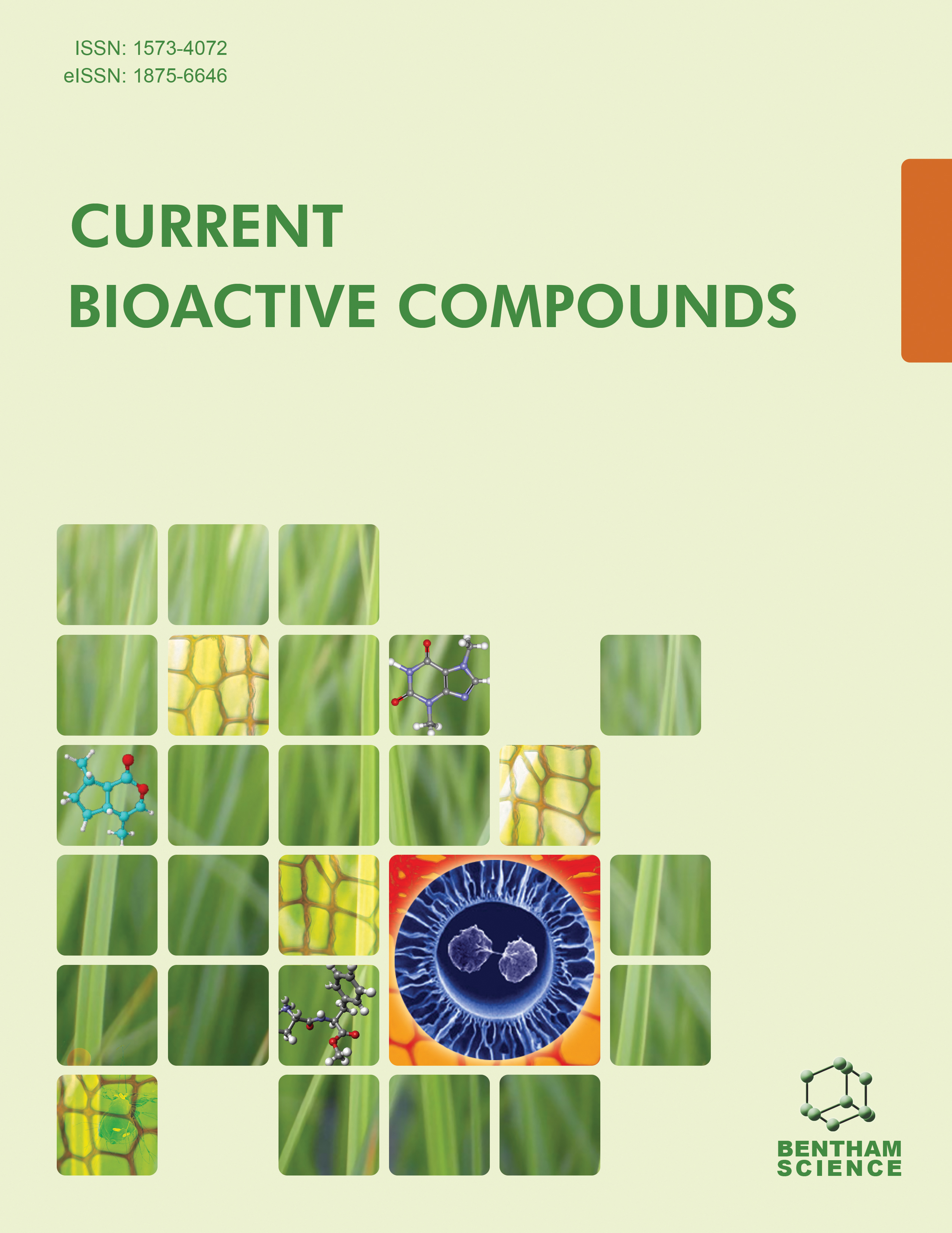-
oa Editorial (Thematic Issue: New Advances of Drug Design in Cancer Disease Part II)
- Source: Current Bioactive Compounds, Volume 10, Issue 3, Aug 2014, p. 139 - 139
-
- 01 Aug 2014
Abstract
This issue (Part II) is aimed for anyone who is interested or works with drug design research, with particular interest in Cancer. We attempt to convey something of the fascination of working in the field of heoretical and Computational Medicinal Chemistry, which overlaps knowledge of chemistry, computation, physics, biochemistry, biology and pharmacology, with emphasis on Cancer. Today, different targets are being explored, characterizing the multifactor aspect of the Cancer disease. Structural features as well as a comprehensive insight into the selectivity and activity of novel ligands are of considerable interest. Multidisciplinary, theoretical-computational medicinal chemistry tools can be used to select potential inhibitors. Euglobal G1 is an acypholoroglucinol (ACPL) with anticancer activity. Many ACPLs are of natural origin, can be found in species of Eucaluptus and exhibit a variety of biological activities. Quantum mechanics can be used to aid in the elucidation of structural, electronic properties, QSAR descriptors, conformations and hydrogen bonding abilities of the ACPLs. In this fifth work, high level quantum mechanical calculations (including HF-6-31g(d,p), DFT/b3lyp/6-31g(d,p), and 6-31g(d,p) with PCM) were performed including in vacuo, water and solvents differing by their polarity and hydrogen bonding abilities in order to investigate the molecular origin of the anti-cancer activity of the naturally-occurring ACPLs. Cancer is a serious world wide public health problem with alarming new cases in 2014. Skin cancer corresponds to a significant number of all malignant tumors. Melanoma is an aggressive neoplasm which in the process of metastasis can migrate to other areas of human body. Discovering new drugs is strategic for public health. Compounds which bind to the active site of tyrosinase and ribonucleotide reductase are potentially useful for the treatment of cancer. Tyrosinase is a key enzyme responsible for melanin production and consequently melanogenesis can be treated by blocking the activity of tyrosinase. Thiosemicarbazone and derivatives should bind to the metal in the active sites of enzymes. They are chelating ligands and can make donation of electrons to the metal atoms. In this sixth work, statistical analysis of density functional theory derived electronic parameters was used to predict the IC50 of ketonethiosemicarbazone derivatives and suggest candidates for anti-tumor agents. Heterogeneous ribonucleoprotein K (hnRNP K) is a protein found in mitochondria, nucleus and cytoplasm interacting with molecules involved in gene expression and signal pathways. Over expression of this protein should lead to colorectal, prostate breast and prostate cancer. Binding to nucleotides is the main interaction that triggers biological activity and is mediated by K homology domains. In this seventh work, the design of anti cancer ligands was evaluated in silico by docking with hnRNP K ligands, propositions of synthetic pathways as well as ligand-based biological activity spectrum evaluations. The Phosphoinositide 3-kinase (PI3K) enzyme is involved in control/signaling of important cell functions for RTK (receptor tyrosine kinase). These enzymes are involved in colorectal, breast and hepatocellular cancer. Overexpression of pathways may occur when gene mutation occurs. This results in an overexpression of tyrosine kinase pathways well as inactivation of the phosphate and tensin homolog (PTEN). In this eight work, studies were made of the known inhibitor in order to obtain profiles and pharmacophores. Filtering based on pharmacokinetic, physicochemical properties, activity and toxicity predictions as well as synthetic accessibility are used to investigate anticancer compounds.


